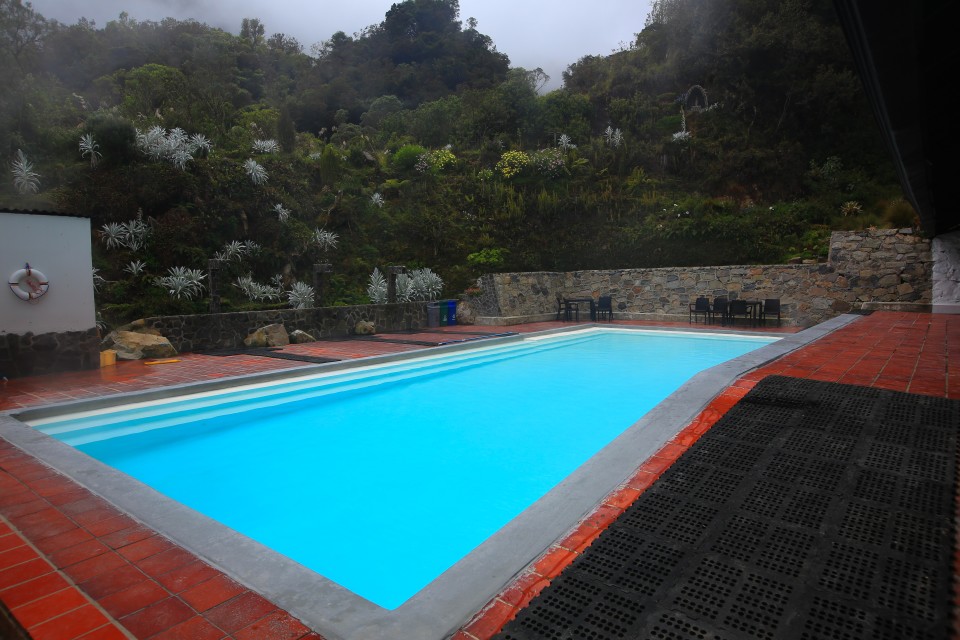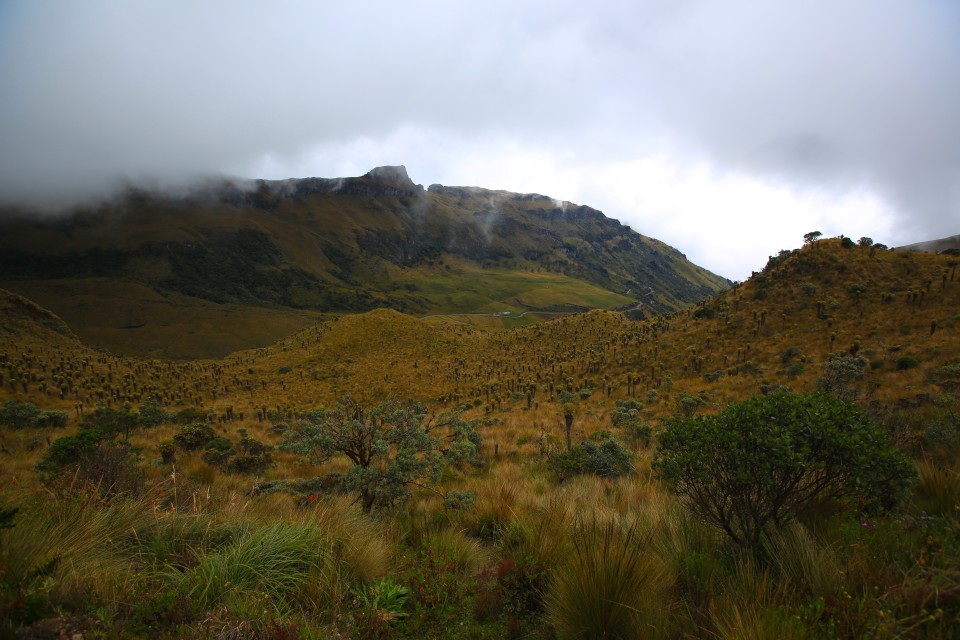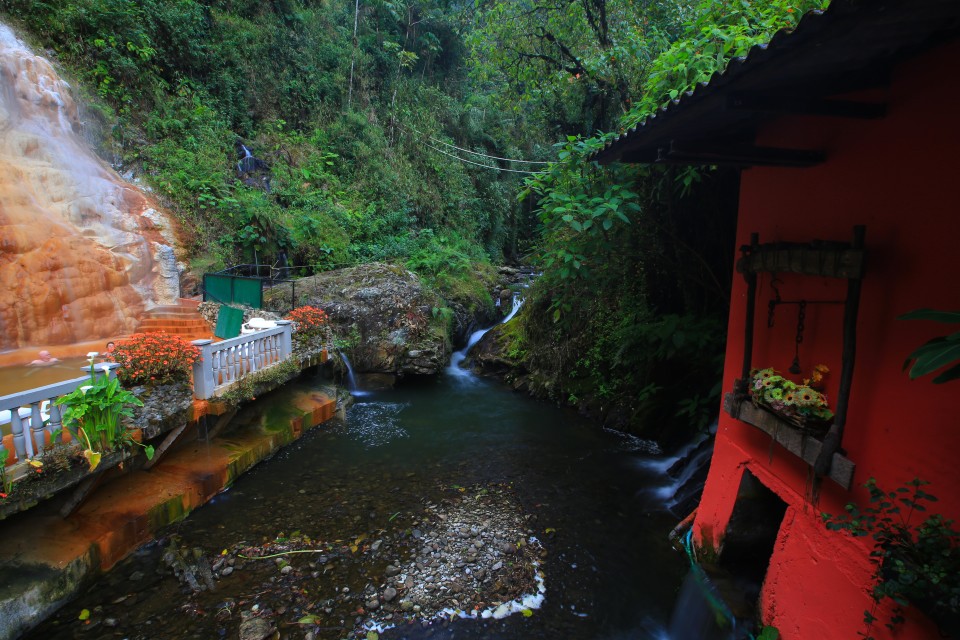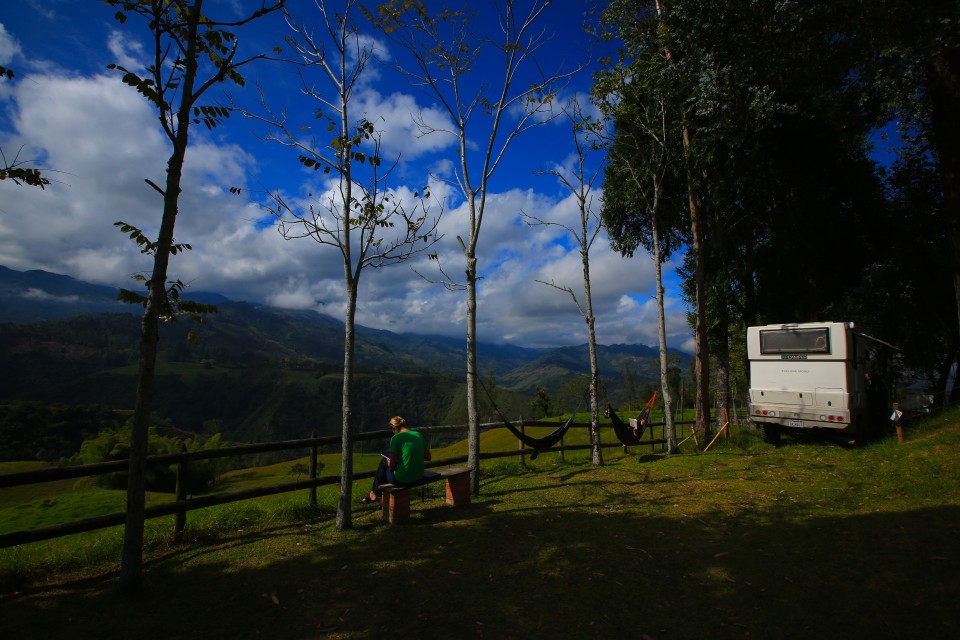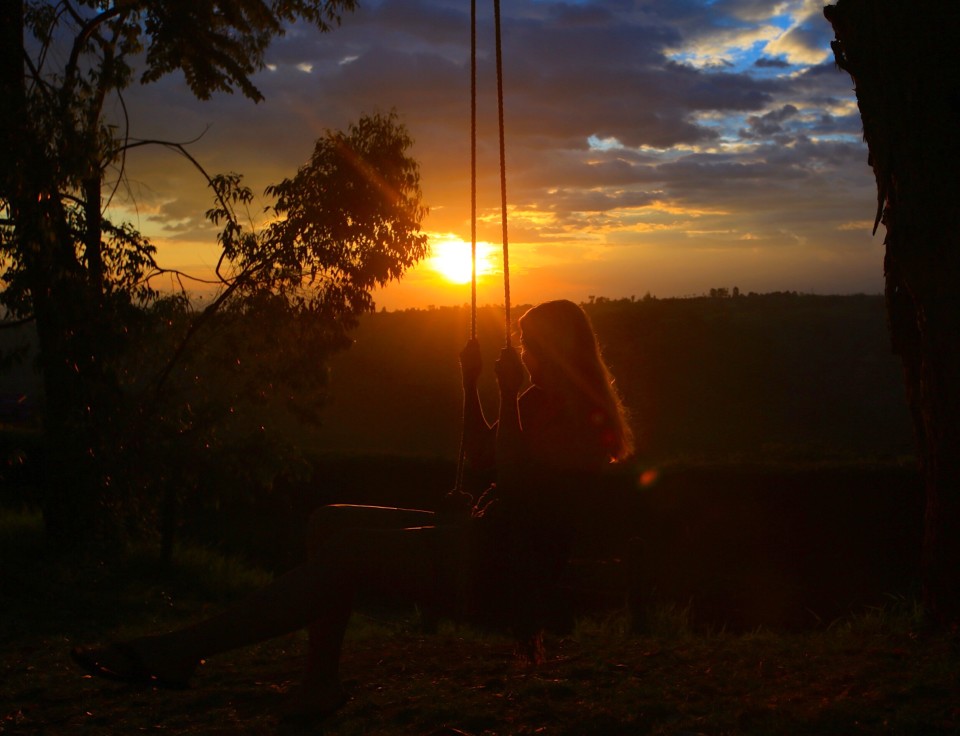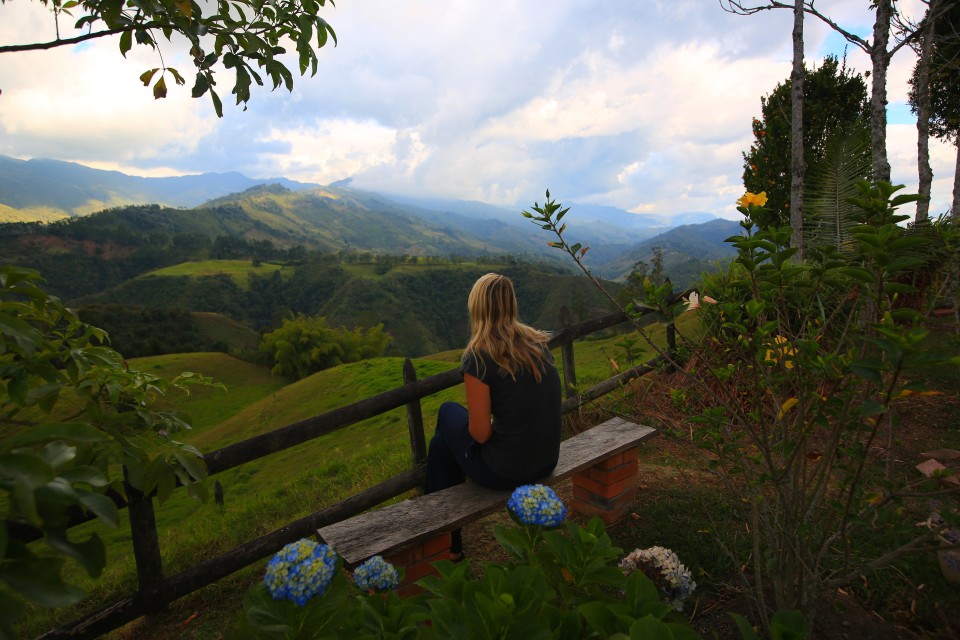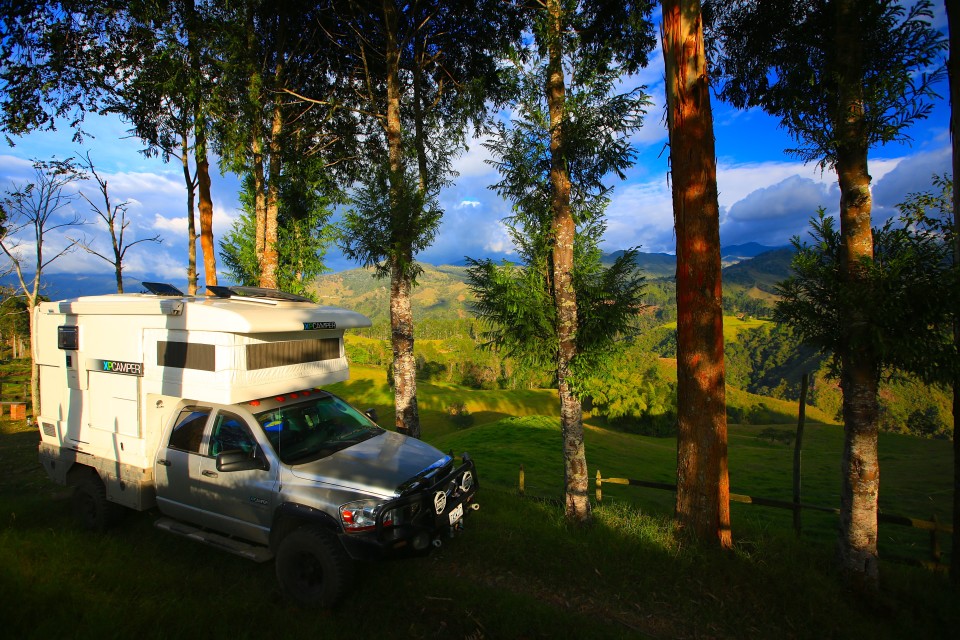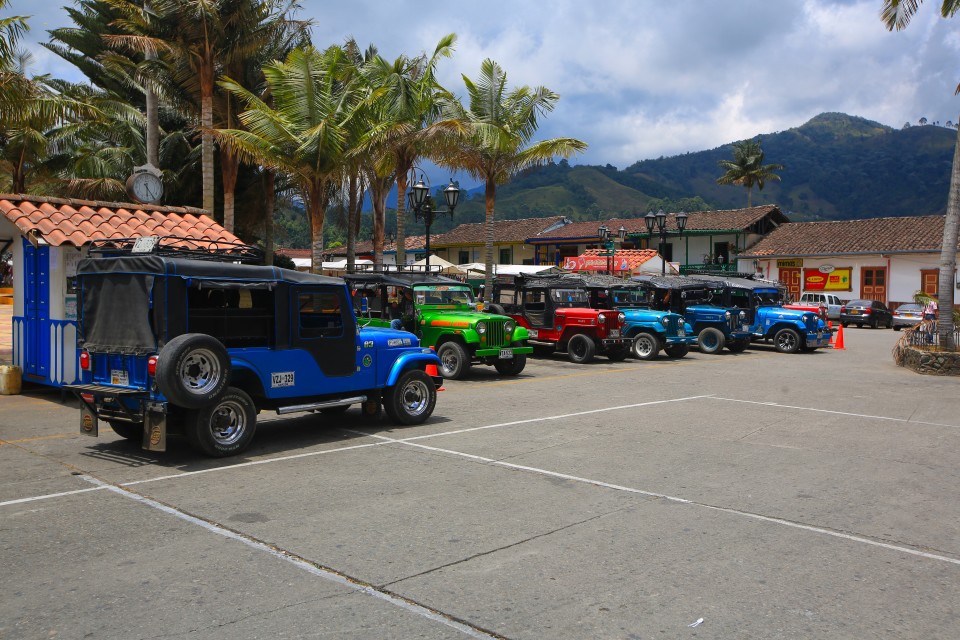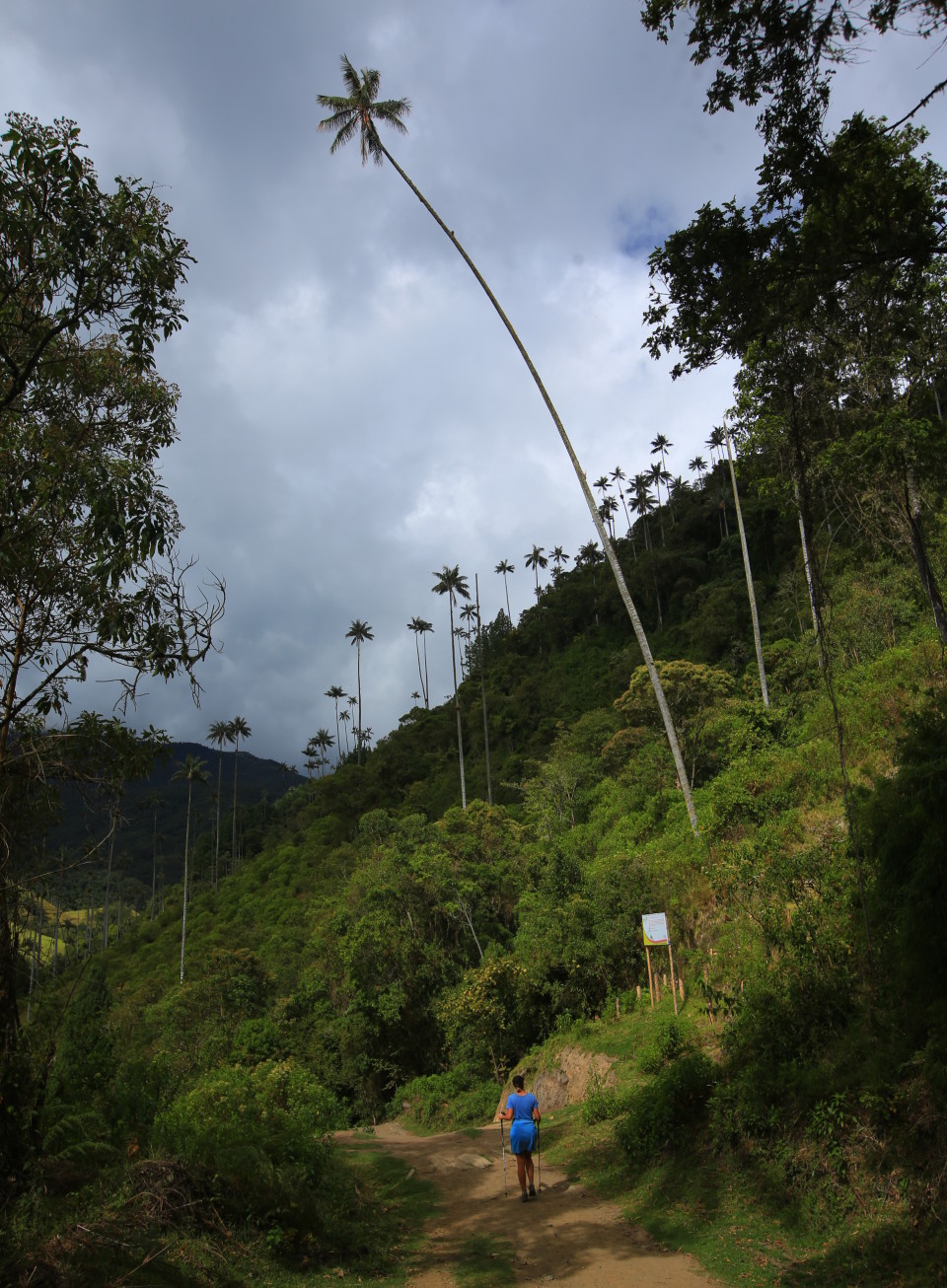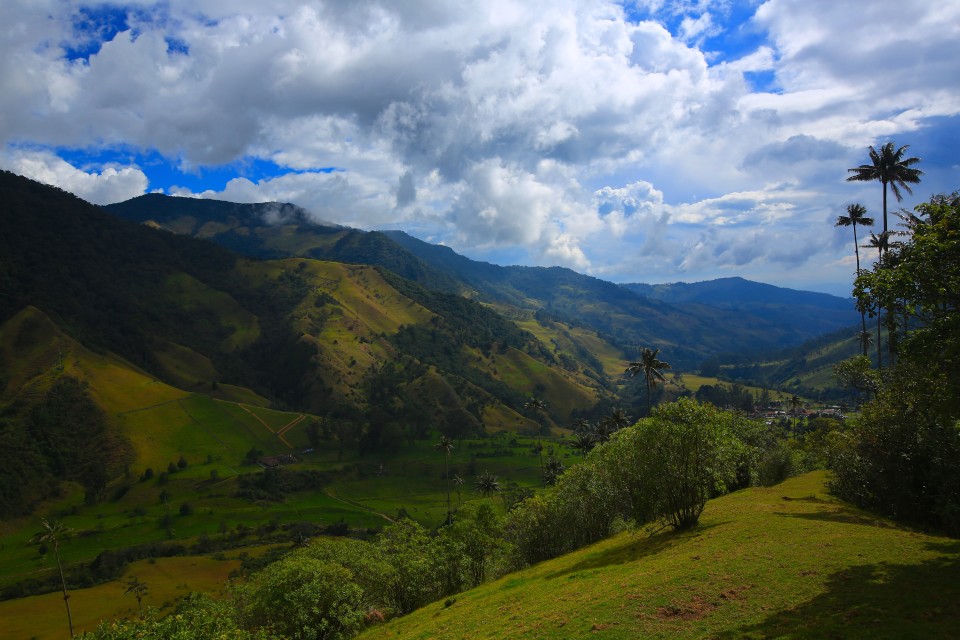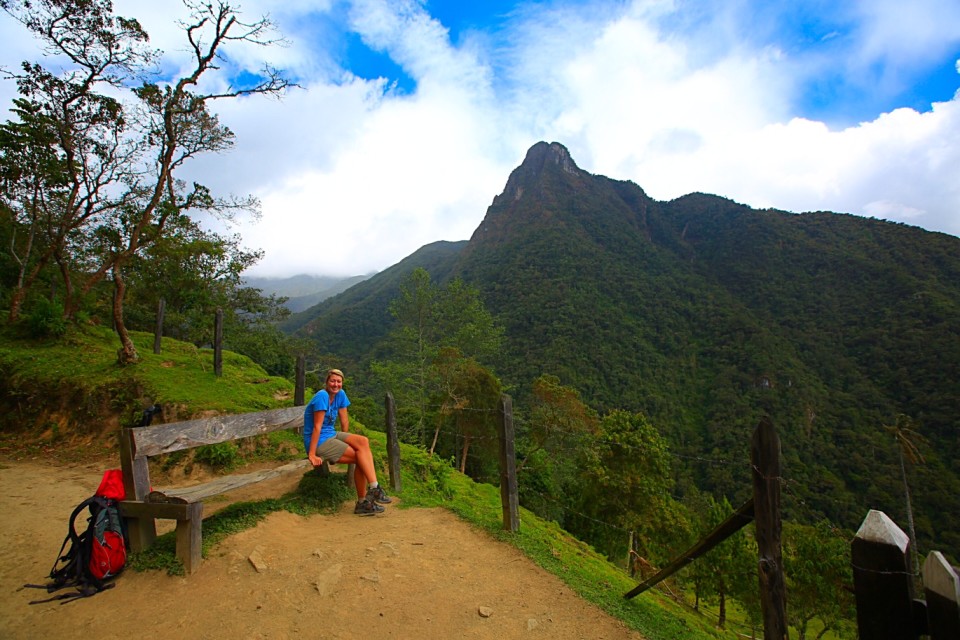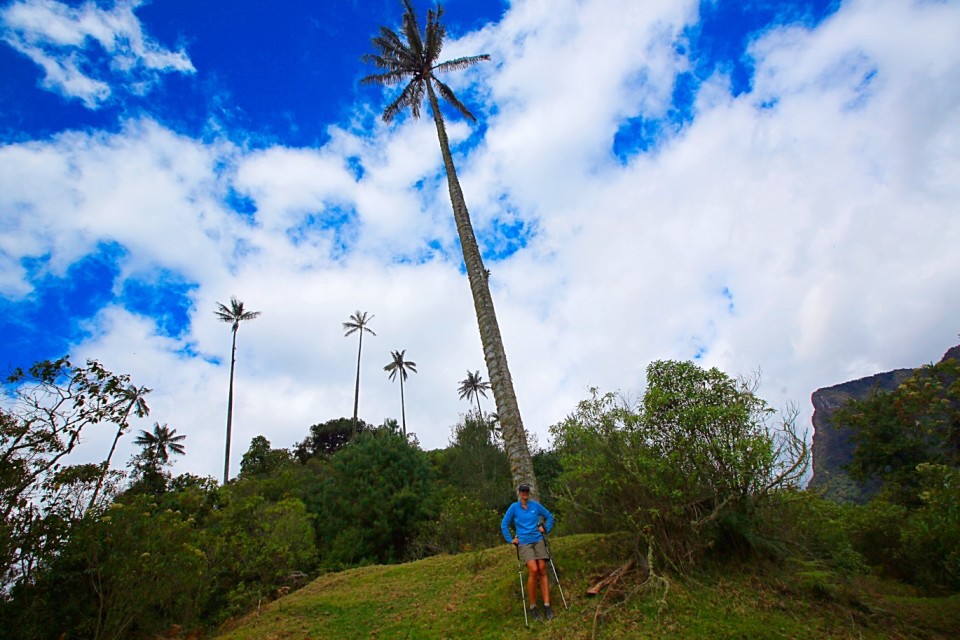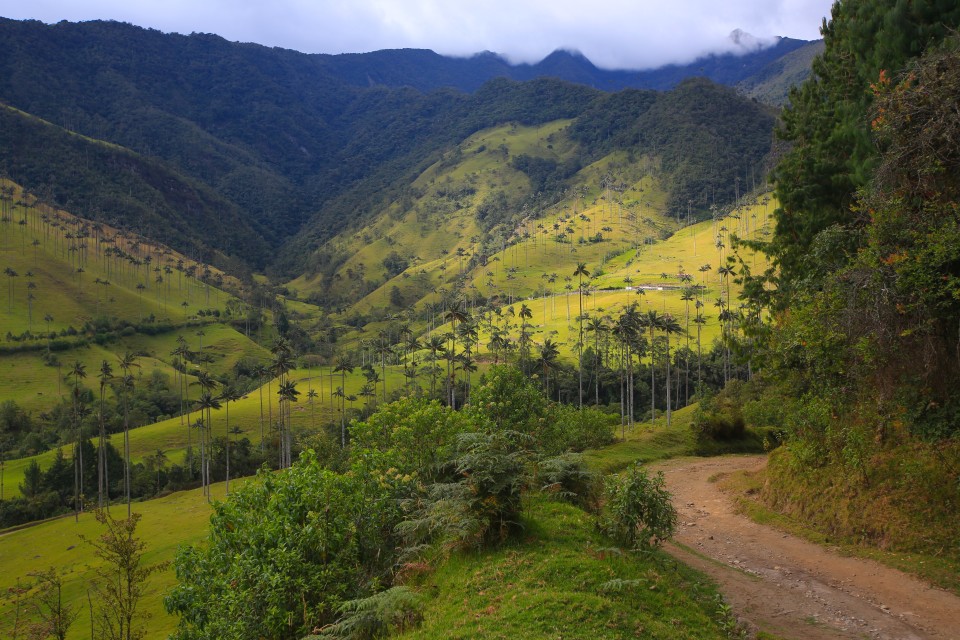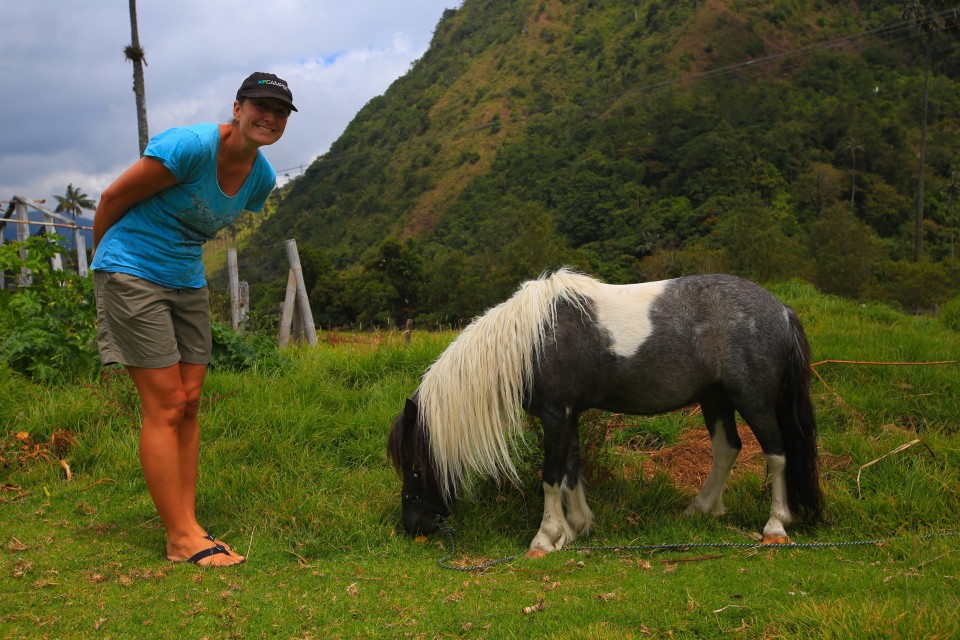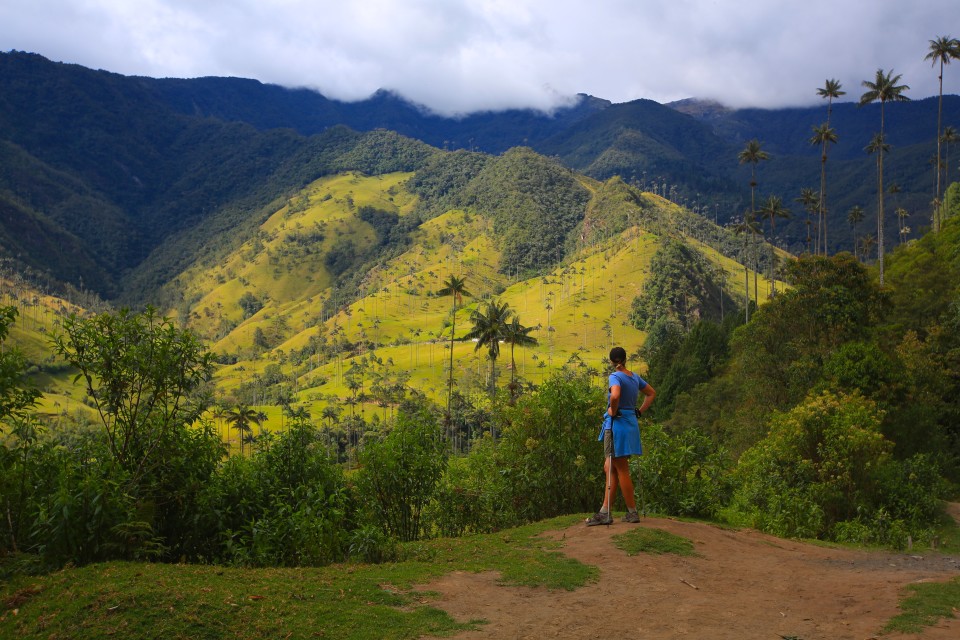Colombia is the first coffee growing country that we have been to on this trip where the locals actually drink coffee. In most of Central America outside of tourist towns, it was hard to find a good cup of coffee, and I was often surprised when I was given Nescafe (instant coffee) in regions where there was coffee growing near by. It makes sense though, coffee is a luxury good and most of the people picking coffee are very poor.
Colombia is a country with a lot more money than any other place we have visited so far, and seemed to have a much larger middle class. Colombia has lots of coffee shops, the Starbucks like Juan Valdez coffee franchise serving fancy (and delicious!) espressos drinks being one of my favorites. But the way most Colombians drink their coffee is black with a ton of sugar. It is called tinto, and you can find it almost everywhere. My favorite way to drink tinto was when we were stopped for road repairs in the mountains and people would come to the truck window and sell me a large shot of strong, hot, sweet coffee for 25 cents. Just a warning, if you order cafe con leche (coffee with milk) you are more than likely to get a steamy cup of hot milk with a splash of coffee. And if you don’t like sugar with your coffee, well, you might just have to make your own.
We started our week in the coffee region at a coffee finca in Manizales where you could drink their amazing, fruity, aromatic coffee all day for free. I took the advice of our Swiss friends Karin and Marcus, who we ran into there, and stopped drinking it at 2PM so I could sleep at some point during the night.
Manizales
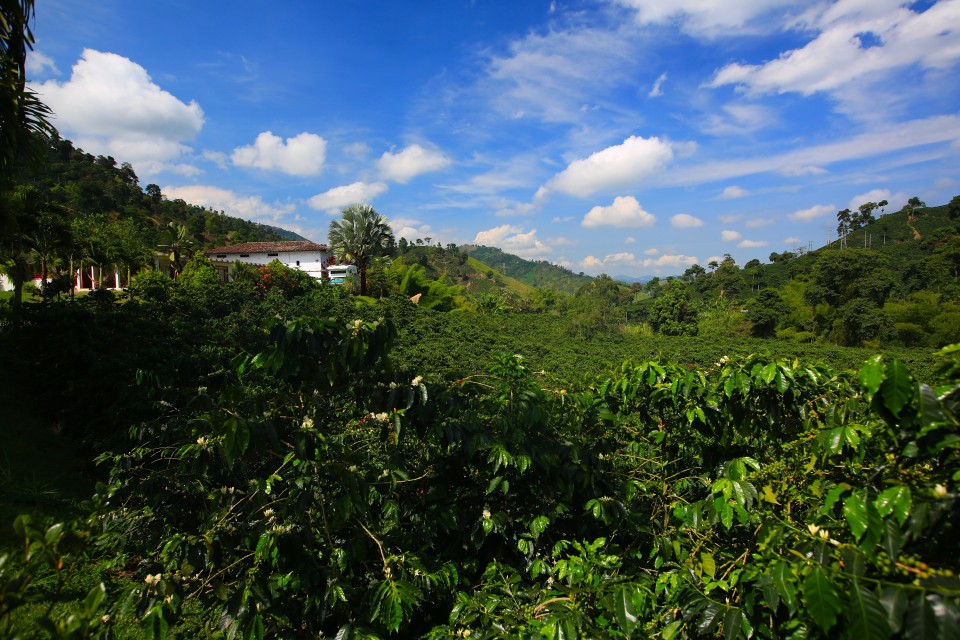
We camped at a beautiful coffee finca surrounded by coffee plants and endless free espressos. Heaven.
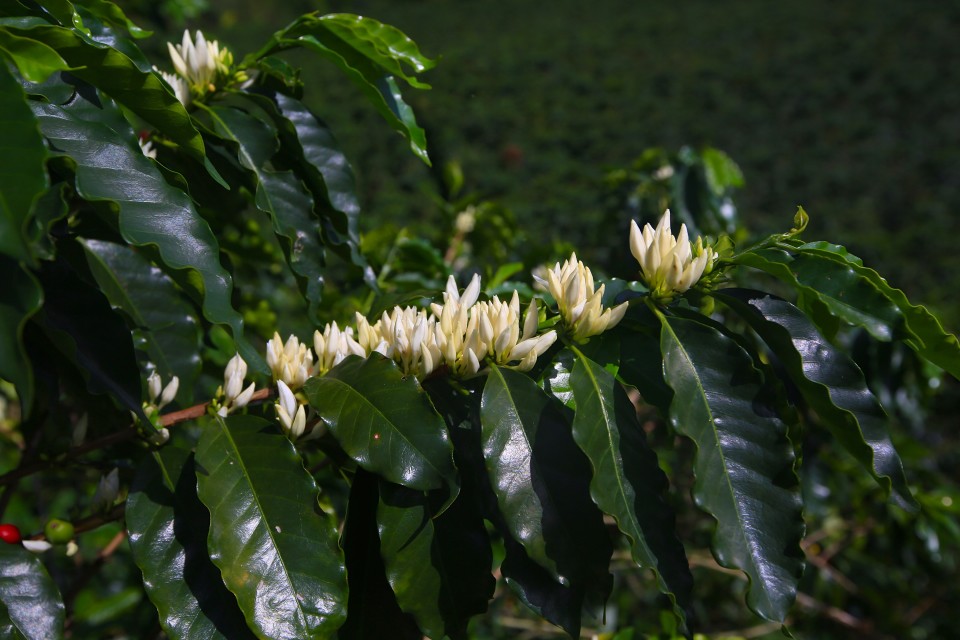
I noticed immediately that the Colombian plants had a strange thing going on. Ripe red coffee beans and flowers. That was not the case in central america. I asked the owner how that was possible and he told me Colombia is the only coffee growing country with two picking seasons.
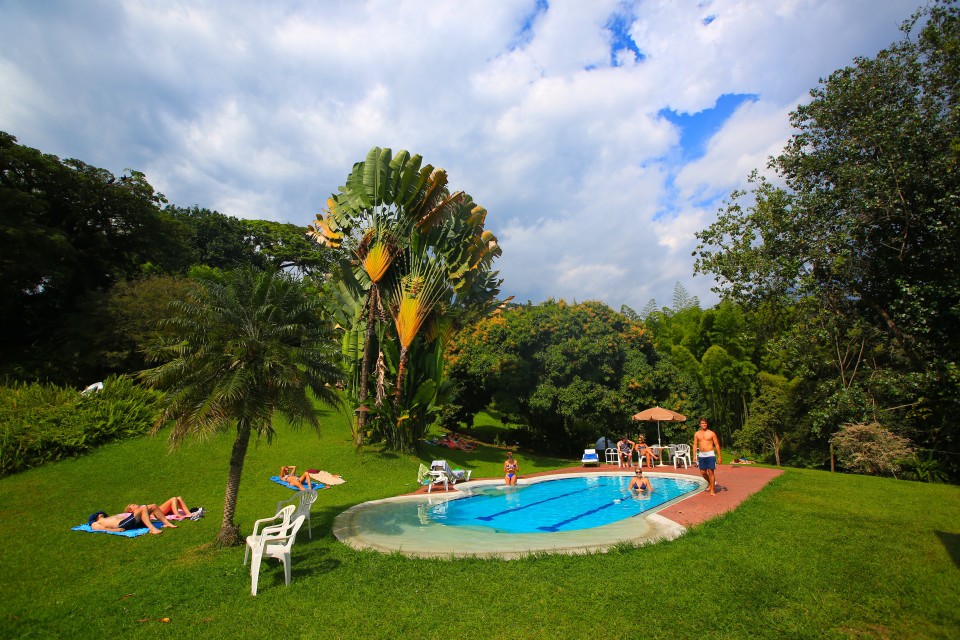
The finca was also a hostal and was full of backpackers. The pool was a great place to hang out and meet people from all over the world.
Parque Nacional Natural Los Nevados
From Manizales we headed back up into high altitude to try and explore Los Nevados, camping our first night a hot springs at over 12,000 feet. The Termales del Ruiz is run by a sweet old man who took our times soaking in the hot sulfury water very seriously. He made us get out and take a ice cold shower every ten minutes (it was 40 degrees out……) and then made us take think yellow chunks of sulfur and rub it all over each other to exfoliate as we shivered dripping wet. And there was also mud…..It was a great way to spend a freezing afternoon and we were super relaxed after hours of soaking if not a little stinky. The XP smelled a bit sulfury that night.
Our time at Los Nevados was kind of a bust, the weather was horrible and it was so foggy we could not see much. On top of that, the active volcano within the park was erupting, so many of the roads in the park were closed. It was still a pretty, remote place to visit.
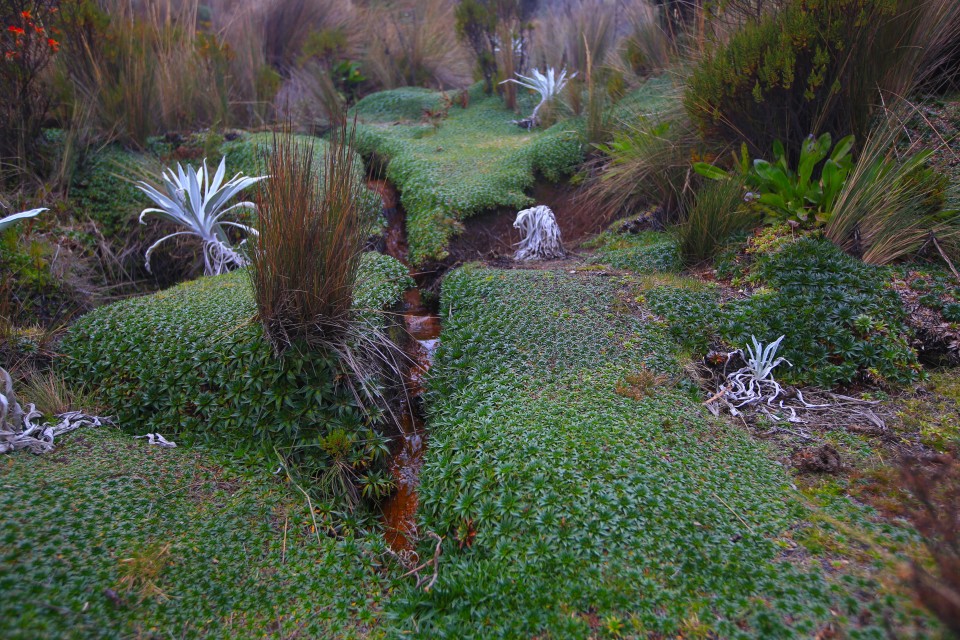
The plants at 14,000 feet were amazing. I loved this ground cover, it was like an ice plant, but very hard. It grew everywhere.
Santa Rosa de Cabal
Our next destination along the ruta de cafe was the hot springs of Santa Rosa de Cabal which is supposed to be one of the top five hot springs in South America. It was pricey (like most things in Colombia), but we spent another relaxing day in the stunning natural hot springs staring at the waterfalls cascading down the lush green hills.
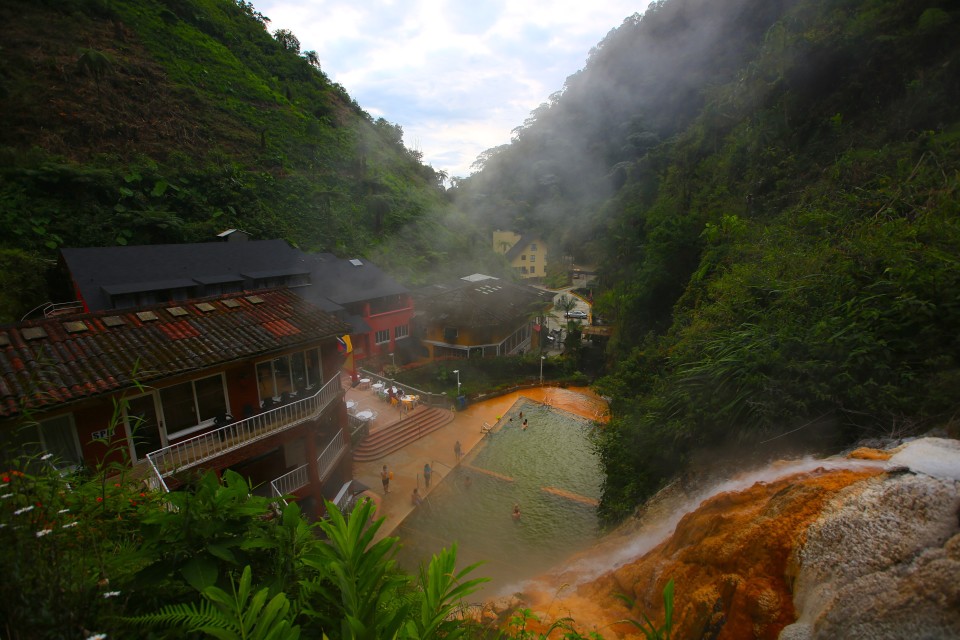
We went to the hot springs at the hotel. There are also hot springs at a ballenario down the road that are cheaper.
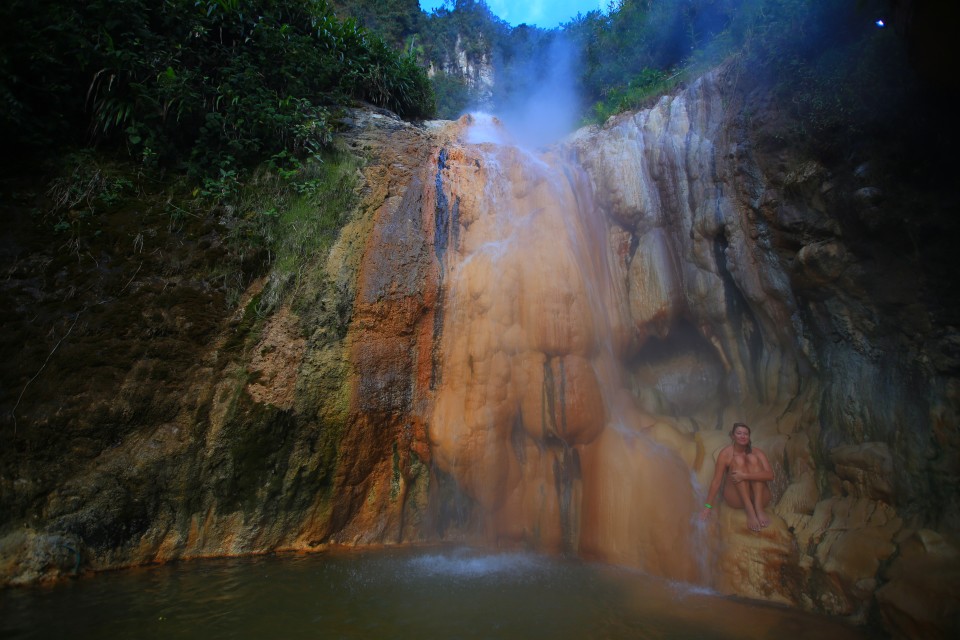
The water fall was very hot and I spent hours sitting in the steam near it. It was very cold out, so the hot steam felt perfect.
Salento
Our last four days in the coffee region were spent in the beautiful valleys and hills around Salento. We ate delicious food in town and spent a few days exploring the area around our campground/hostal.
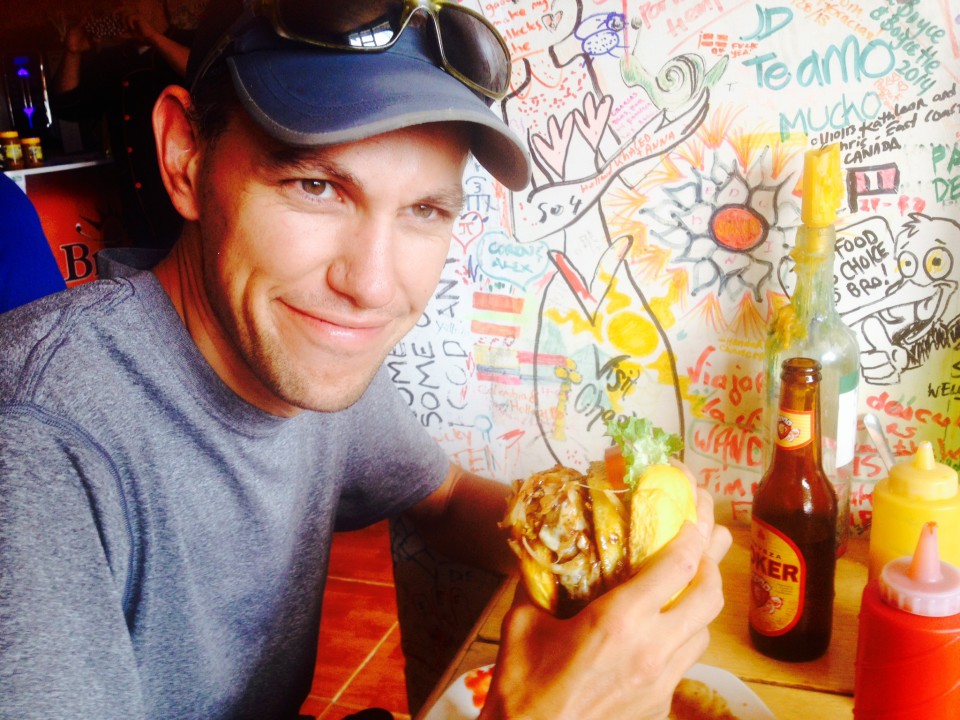
Sam is really stoked about his gigantic hamburger at Brunch in Salento. So good! They also make homemade peanut butter.
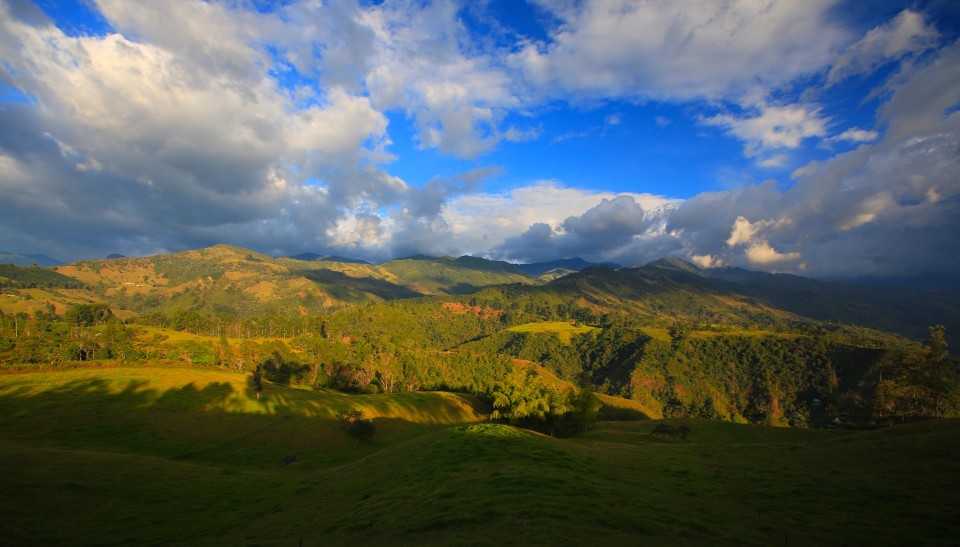
The entire time we were in the mountains in Colombia we had very blue skies filled with clouds, but it never rained. It made it all look so dramatic.
Valle de Cocora
About 30 minutes from Salento is Valle de Cocora. This area is full of wax palms, the national tree of Colombia. Before this area became protected, the wax palms were almost on the verge of extinction because of farmers using them for candle wax and the palm fronds for religious ceremonies on Palm Sunday. They are the tallest palm trees in the world and seem so out of place at 9500 feet in a cold cloud forest. We spent a few days hiking the abundant trails and pretty much just gawking at the beauty.
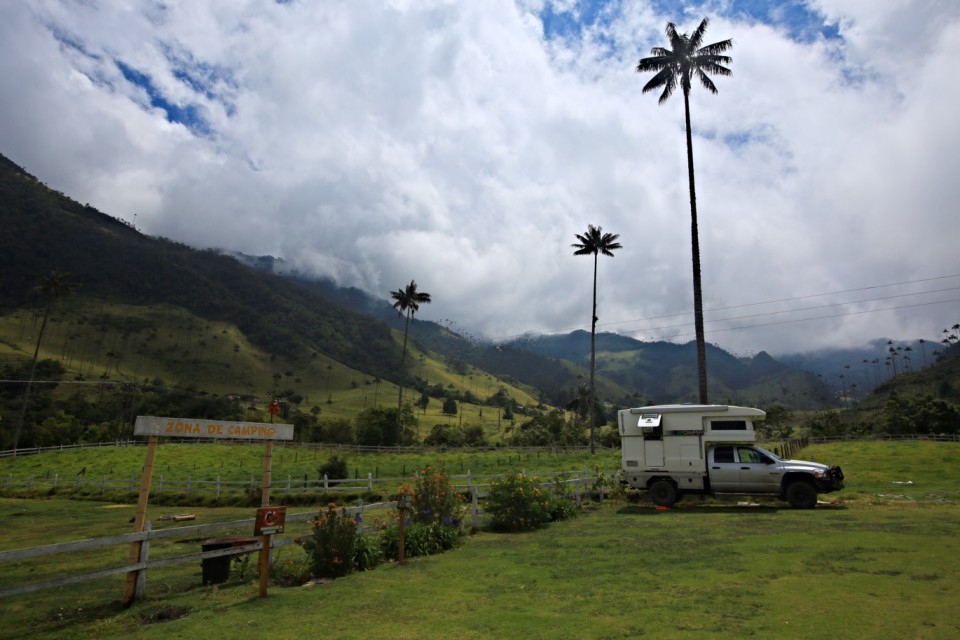
Our parking spot. We were there on a Saturday and it was full of fun Colombians touring our camper. They are so much fun, we loved talking with them all.














